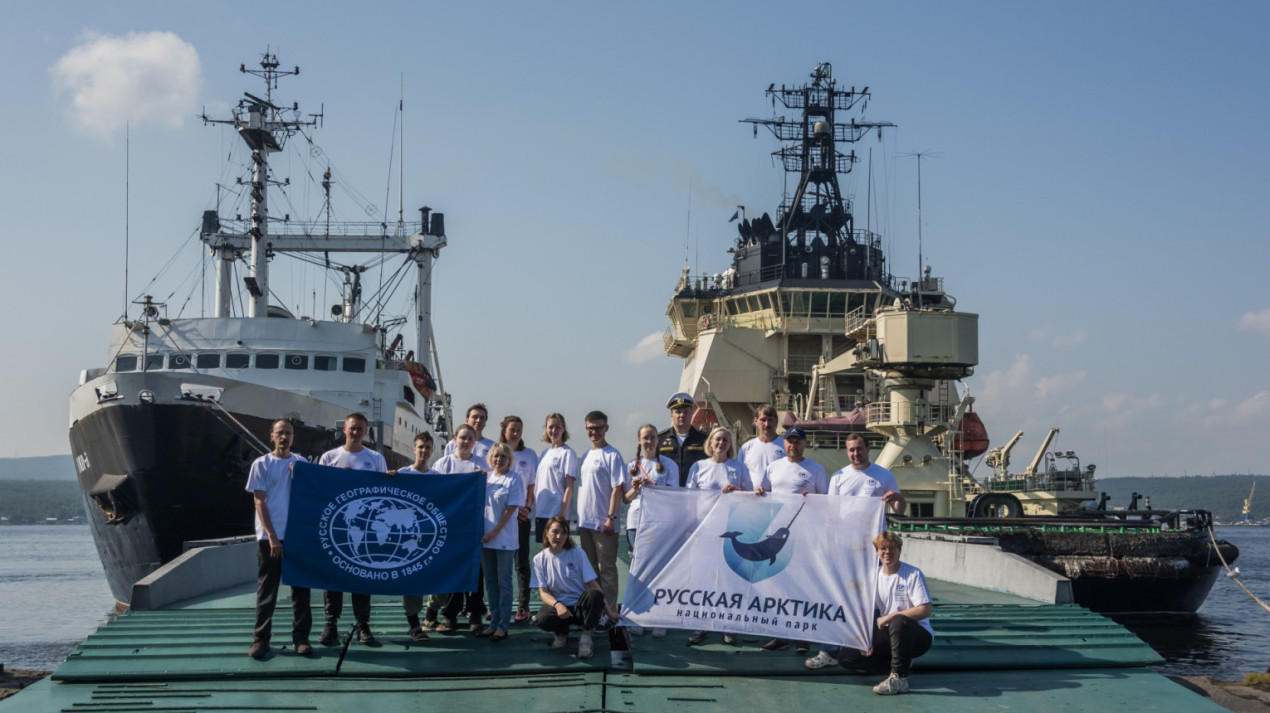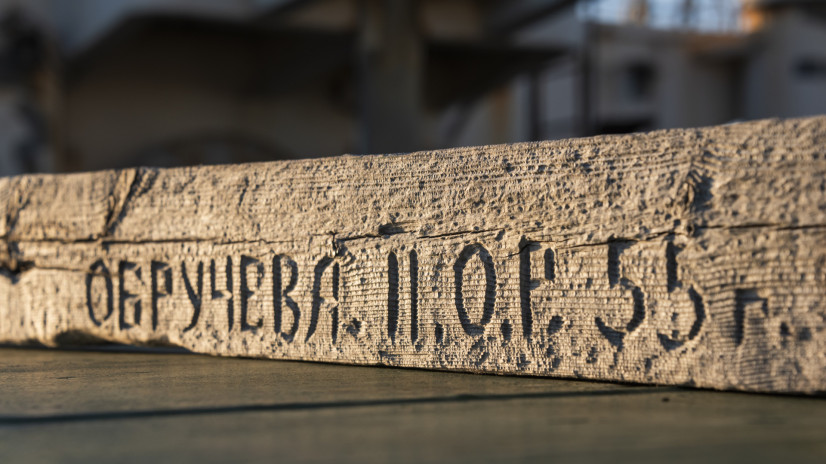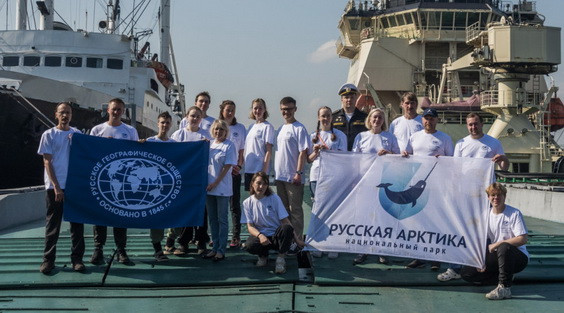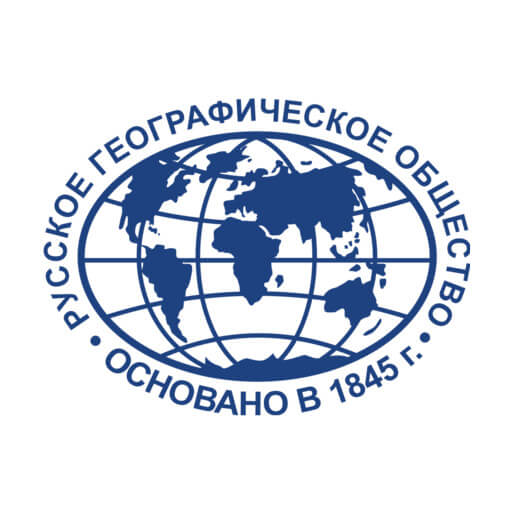
The start of the expedition in Murmansk. Photo: Vitaly Novikov
The third field season of the complex expedition of the Russian Geographical Society and the Russian Ministry of Defense to the Novaya Zemlya archipelago has started. Its purpose is to study Arctic biomes, the dynamics of glacial processes, and environmental pollution by heavy metals and microplastics, as well as to install a commemorative plaque in honor of the 180th anniversary of the RGS at Cape Zhelaniya.
On board the «Ilya Muromets», 17 scientists and volunteers of various specialties will make a clockwise passage around Severny Island, making eight landings to work on land. Glaciologists will study glacial processes and their impact on coastal areas in detail. The need for these studies is due to the fact that glaciers are melting under conditions of global warming, which leads to an increase in the level of the world’s oceans.
In parallel, the experts will conduct research on permafrost and hydrometeorological conditions — the data is important for analyzing climate change and assessing its impact on fragile Arctic ecosystems. Scientists will pay special attention to environmental monitoring: the expedition participants will assess the level of environmental pollution by heavy metals and microplastics. For this purpose, samples of snow, water, soil, and biota (living organisms) will be taken along the route at the landing points. Part of the research will be devoted to the analysis of plastic aging and degradation processes in natural Arctic conditions. As part of their tasks, microbiologists will look for new types of microorganisms, including potential producers of antibiotics.
«This season will continue the RGS’s research on Novaya Zemlya, » said Yuri Suyetin, head of the expedition and representative of Russian Arctic National Park. «The study of Arctic exploration is one of the priorities of Russia’s state policy. In the year of the 180th anniversary of the RGS, the expedition participants will install a commemorative plaque at Cape Zhelaniya, a strategically important point on the northern tip of Severny Island on the Novaya Zemlya archipelago. The history of this place is closely connected with the development of the Russian Arctic and key stages of national history: in 1913, Georgy Sedov installed a navigation sign here during his expedition to the North Pole, and subsequently the first Soviet polar station was founded on the cape. During the Great Patriotic War, it served as a weather post. In 2025, Cape Zhelaniya remains a symbol of Russia’s scientific, military, and spiritual presence in high latitudes.»
The historical and cultural part of the expedition includes the collection of artifacts from naval expeditions of the past to restore accurate context. This work will continue the research started by Russian scientist Pyotr Boyarsky to study the heritage of the Russian Arctic and create an Atlas of Artifacts. Among the field tasks are capturing Severnaya Zemlya from a quadcopter and LIDAR scanning. The researchers will pay special attention to the search for sunken ships: Willem Barentsz’s ship, abandoned in 1597, as well as the scientific research vessel «Akademik Shokalsky», sunk by a German submarine in 1943. Both sites are memorials to the courage and resilience of people in the face of harsh nature and military threats, as well as a reminder of the tragic cost of developing this region. The results of this year’s work will help substantiate Russia’s priority in the development of Novaya Zemlya, and give an idea of the location of heritage sites on the archipelago.

The findings of the expedition in 2024. Photo: Vitaly Novikov
The biodiversity of Novaya Zemlya’s marine and terrestrial ecosystems allows biologists to conduct research and record mammals such as the Atlantic walrus and the polar bear. The isolation of the archipelago gives scientists the opportunity to study «clean» ecological processes without anthropogenic influence. This work is extremely important for the development of Arctic biomonitoring: it will ensure the continuity of wildlife observations and expand their geography.
«These conditions of the Arctic ecosystems are critically important for the implementation of the state priorities outlined in the Strategy for the Development of the Arctic Zone of the Russian Federation until 2035,» said Natalya Belyakova, Director of the Expeditionary and Tourism Development Department of the RGS. «This field season continues the long-term comprehensive research of high latitudes under the auspices of the RGS. In particular, during 2021–2024, together with the Russian Ministry of Defense and the Northern Fleet, we explored Severny and Yuzhny Islands of Novaya Zemlya as part of the historical and cultural project 'The Main Face of Russia’. There is still a place for geographical discoveries. For example, a new island was discovered in the area of Zayachaya Bay near the Rykachev Glacier and a bay in the northeastern part of Inostrantsev Bay. Scientists have recorded signs of strong earthquakes, studied historical settlements, and found more than 30 artifacts related to polar expeditions of the past. The climate and terrain are constantly changing, and it is important for us to monitor these changes for the safe development of logistics routes and the development of the potential of these territories.»
The expedition is being conducted with the participation of Russian Arctic National Park, the Zoological Institute of the Russian Academy of Sciences, the Institute of Geography of the Russian Academy of Sciences, the Papanin Institute for Biology of Inland Waters of the Russian Academy of Sciences, the Museum of Anthropology and Ethnography of the Russian Academy of Sciences, Russian Technological University, Petrozavodsk State University, Northern (Arctic) Federal University, the State Oceanographic Institute, and the company «Fertoing».


